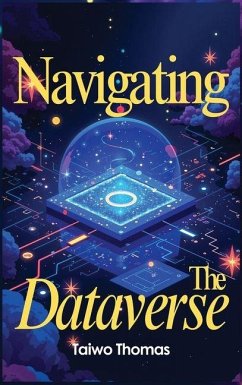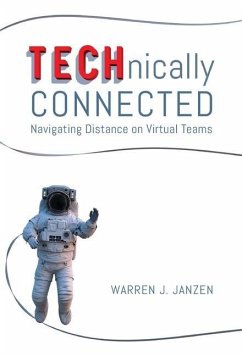
Navigating Between Scylla and Charybdis
Versandkostenfrei!
Versandfertig in über 4 Wochen
28,99 €
inkl. MwSt.
Weitere Ausgaben:

PAYBACK Punkte
14 °P sammeln!
The tale of Odysseus and his encounter with Scylla and Charybdis is an instructive metaphor for considering theories of organizational design and leadership. The tale speaks of navigating between two extremes where dodging one increases the risk from the other. On the one side of the strait sits Charybdis, the "old way of doing things." On the other lies a radical new approach to our understanding of leadership and organizational structure. Not as well known, it can be likened to the Scylla. Instead, perhaps it would be wise to take a cue from Odysseus and navigate between the two views in a b...
The tale of Odysseus and his encounter with Scylla and Charybdis is an instructive metaphor for considering theories of organizational design and leadership. The tale speaks of navigating between two extremes where dodging one increases the risk from the other. On the one side of the strait sits Charybdis, the "old way of doing things." On the other lies a radical new approach to our understanding of leadership and organizational structure. Not as well known, it can be likened to the Scylla. Instead, perhaps it would be wise to take a cue from Odysseus and navigate between the two views in a balanced approach to organizational structure and leadership. Some leadership and organizational theorists do not agree. They argue that the Industrial-Age approach to organizations generates stodgy, vertical hierarchies incapable of relevant response when faced with an adaptive environment of increasing complexity, volatility, and ambiguity. They point to business failures as well as Operation IRAQI FREEDOM as examples of organizational failures to adapt. Instead, they argue it is time to radically alter our concept of leadership and organizational structure. They advocate flattening organizations to improve knowledge flows and foster innovative thinking. These organizations, they argue promise to explore the potential of human cooperation and create genuine creative organizational adaptation to a complex environment. In attempting to sweep away the old order, however, key merits of the Industrial-Age approach are lost. Likewise, the uncritical adoption of these new radical ideas may pose dangerous risks. What is needed, then, is a different approach to leadership and organizations--one that recognizes the strengths and weaknesses of both views and posits a role of leadership that, like Odysseus, effectively navigates between the two. In this approach--the Odyssean leadership approach--an organizational leader navigates a course between seeming contradictions and paradoxes. Th This work has been selected by scholars as being culturally important, and is part of the knowledge base of civilization as we know it. This work was reproduced from the original artifact, and remains as true to the original work as possible. Therefore, you will see the original copyright references, library stamps (as most of these works have been housed in our most important libraries around the world), and other notations in the work. This work is in the public domain in the United States of America, and possibly other nations. Within the United States, you may freely copy and distribute this work, as no entity (individual or corporate) has a copyright on the body of the work. As a reproduction of a historical artifact, this work may contain missing or blurred pages, poor pictures, errant marks, etc. Scholars believe, and we concur, that this work is important enough to be preserved, reproduced, and made generally available to the public. We appreciate your support of the preservation process, and thank you for being an important part of keeping this knowledge alive and relevant.












